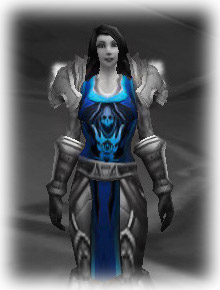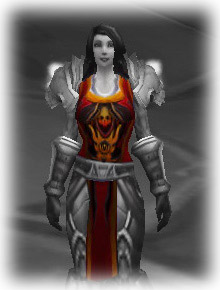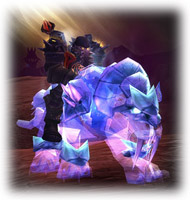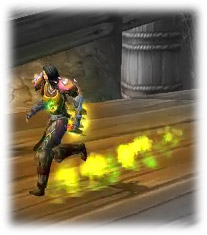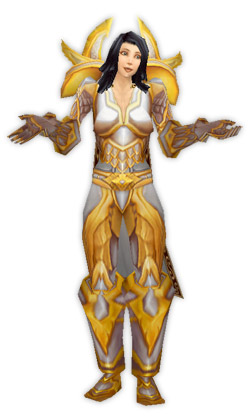 So, it’s Patch Day, and you’re confronted with a whole host of changes to spells you used to know like the back of your hand! What to do, what to do?
So, it’s Patch Day, and you’re confronted with a whole host of changes to spells you used to know like the back of your hand! What to do, what to do?
Holy paladin core mechanics have been changed quite noticeably in this patch, so let’s take a look at what you’ll see when you log in. Read on for details of changed spells, new spells, and paladin glyphs! (I’ll tackle the talent trees soon, but not tonight – I need sleep!)
Note that where relevant, I’m talking about spell ranks you’d use at level 70. I’m also only covering Holy and general paladin mechanics here; Protection and Retribution changes are topics for another day (or blog).
Changed Spells
- The Forbearance debuff from Divine Shield and Blessing (now Hand) of Protection now lasts 3 minutes, not 1.
- Lay On Hands now has a 20 minute cooldown (down from 60) and costs 0 mana.
- Avenging Wrath no longer causes the Forbearance debuff, and increases all damage and healing done by 20% for 20 seconds.
- Holy Shock now has a 6 second cooldown (down from 15) and the range of the healing effect now extends to 40 yards. Its mana cost is increased from 650 to 705.
- Seals:
- Pretty much all seals have had their damage reduced.
- Seals now last for two minutes.
- Seals aren’t consumed when you use Judgement.
- Seal of the Crusader no longer exists and its damage boost has been rolled into base spells.
- Alliance Paladins now get Seal of the Martyr (equivalent to Seal of Blood), and Horde Paladins now get Seal of Corruption (equivalent to Seal of Vengeance).
- Judgement: Big changes.
- Pre Patch 3: You use a generic “Judgement” ability to apply a debuff or damage to the mob based on the Seal you’re running.
- Post Patch 3: You use a specific Judgement of Justice, Judgement of Light or Judgement of Wisdom which applies the relevant debuff regardless of which Seal you have active. (It also causes damage.) For instance, you might keep Seal of Wisdom running for yourself while periodically using Judgement of Light to keep the Light effect on the mob for other players.
- Judging now activates the Global Cooldown.
- Blessings:
- Blessing of Light no longer exists, and its healing boost has been rolled into base heal spells. Greater Blessing of Light also no longer exists.
- Blessing of Salvation and Greater Blessing of Salvation no longer exist, replaced with Hand of Salvation.
- Blessing of Freedom, Blessing of Sacrifice and Blessing of Protection no longer exist, and have been replaced with “Hand of [foo]” spells.
New Spells

- Hands: are the new mechanic for situational buffs. You can only have one Hand spell on a given ally at any one time, but they don’t overwrite Blessings.
- Hand of Freedom: a renamed Blessing of Freedom, slightly cheaper.
- Hand of Protection: a renamed Blessing of Protection, with a longer Forbearance debuff.
- Hand of Sacrifice: the new Blessing of Sacrifice. Lasts 12 seconds (instead of 30 seconds); has a 2 minute cooldown (instead of 30 seconds). Transfers 30% of damage instead of 104 damage per hit. A significant reduction to its utility; now it helps mitigate an occasional burst of damage, instead of helping the paladin escape CC to save a friend.
- Hand of Salvation: the new Blessing of Salvation. Completely different mechanics; now works by reducing a single target’s threat for 20% over 10 seconds. Has a 2 minute cooldown. Huge nerf to its utility; however, this may not be a problem if tank agro generation has been buffed as much as reports indicate.
Glyphs
At 70, you’ll have two Major Glyph slots and three Minor Glyph slots to fill.
This list covers all the Glyphs, both Major and Minor, available for Paladins. However, looking at Glyphs that would appeal specifically for healer paladins:
Your Major Glyph Options
- Glyph of Cleansing: Reduces the mana cost of your Cleanse and Purify spells by 20%.
- Glyph of Divinity: Your Lay on Hands also grants you as much mana as it grants your target.
- Glyph of Flash of Light: Your Flash of Light heals for 50% less initially, but also heals for 140% of its inital effect over 12 sec.
- Glyph of Holy Light: Your Holy Light grants 10% of its heal amount to up to 5 friendly targets within 10 yds of the initial target. (Note that the tooltip says 100 yards, but that’s a typo. It’s 10 yards.)
Note that there are some very nice Glyphs for Seal of Light and Seal of Wisdom, but they’re not trainable for Scribes until Wrath of the Lich King, unfortunately.
Picking Your Glyphs
So, at 70 you’ll have three minor and two major glyph slots to fill. Regarding Majors, I’d skip the Flash of Light Glyph until you have a better idea of how your other heals hold up; frankly, I think it’s way too weak and slow a HoT to be worth the huge upfront gimp to the heal (especially since it means you can’t spam FoL to heal any more). Were the HoT a) bigger and b) faster, it might be worth it, but as it is I think it’s just dangerous.
The Holy Light glyph is a definite winner; the spell loses nothing, and gains a useful mini-AoE. For me, the Glyph of Divinity is the most appealing choice for the second slot, as I don’t do much cleanse-heavy content. I’ll add a Glyph of Seal of Wisdom to the third slot when I hit 80.
As for Minor glyphs… well, it’s hard to pick them, since we don’t know what our options are yet! There are very few known minor glyphs for paladins yet, as they’re learnt through a discovery system with a 20-hour cooldown. The stand-out winner is Glyph of Lay on Hands (increases the mana restored by your Lay on Hands spell by 20%), which synergises nicely with the Major glyph for the same spell. For the other two Minor slots, I’ll probably use something like Glyph of the Wise and Glyph of Sense Undead, purely for soloing purposes.
Of course, it all depends on which Minor Glyphs one has access to – you can’t get a Glyph no-one’s learnt yet!
Gearing
The short version:
- Spell crit, spell hit and spell haste ratings are disappearing. Crit, hit and haste ratings now affect both spellcasting and physical abilities.
- +heal and +dmg/heal ratings are disappearing, and being replaced with spellpower, which affects both spell damage and healing.
- Existing items with +healing are being translated to spellpower stats instead; it’s not a direct 1:1 translation, so on Wrath Day you’ll end up with a lot less spellpower than your current +heal.
- This is not a problem, because other mechanics are being revamped to account for it (for instance, healing spells are getting a much bigger boost from spellpower).
- Existing items with +dmg/heal are being translated to spellpower as well, at close to a 1:1 transition.
For more details on how this works and what it means for your gearing, see my post on the gearing changes.
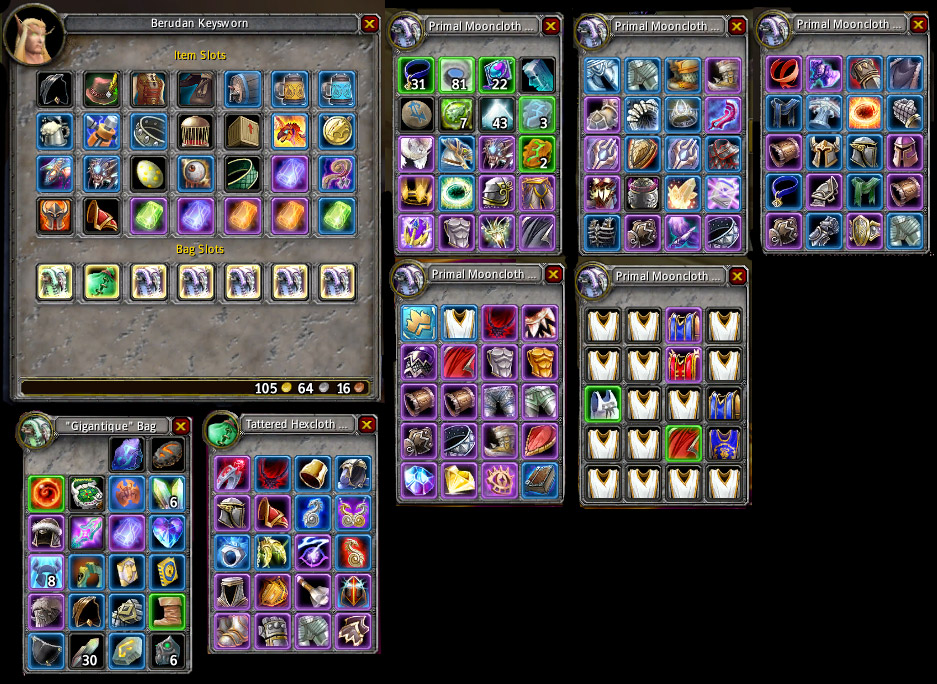
 1. Make Black War mounts cost Honor, not Marks – or put in alternate/variant mounts that cost Honor, not Marks.
1. Make Black War mounts cost Honor, not Marks – or put in alternate/variant mounts that cost Honor, not Marks.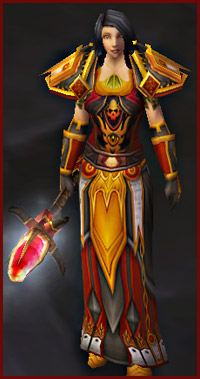 And yet, and yet… only the most hard-hearted players are cruelly efficient enough to be able to delete or vendor everything they’re not actually using at their current level of progression. The rest of us, well – we hold onto our vanity pets and our tabards and our lovely dresses and our festival pantsuits and our armor from three tiers of progression ago that we just can’t bear to get rid of because it looks so cool or we sweated blood getting it.
And yet, and yet… only the most hard-hearted players are cruelly efficient enough to be able to delete or vendor everything they’re not actually using at their current level of progression. The rest of us, well – we hold onto our vanity pets and our tabards and our lovely dresses and our festival pantsuits and our armor from three tiers of progression ago that we just can’t bear to get rid of because it looks so cool or we sweated blood getting it. Elixirs: Battle Elixirs
Elixirs: Battle Elixirs Elixirs: Guardian Elixirs
Elixirs: Guardian Elixirs Flasks
Flasks Weapon Oils
Weapon Oils Foods
Foods Potions
Potions Scrolls
Scrolls Other Items
Other Items
